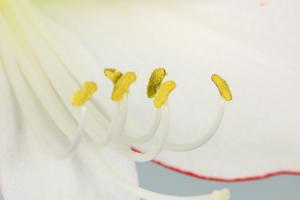Which Organelle in a Plant Cell Stores Water Before Photosynthesis
Photosynthesis is a process that occurs in plant cells, enabling them to produce glucose from carbon dioxide and water using energy from the sun. However, before photosynthesis can occur, plant cells need to store water to enable the process. The organelle that stores water in a plant cell is known as the vacuole.
What is the Vacuole?
The vacuole is a structure found in both plant and animal cells. However, in plant cells, it is larger and more prominent. It is a membrane-bound organelle that stores various substances, including water, enzymes, and waste products. The vacuole is very crucial for plant growth and development because it allows the plant cell to maintain its shape, store nutrients and enable proper functioning of various metabolic processes.
How Does the Vacuole Store Water?
The vacuole is filled with water, which is taken in and released through the process of osmosis. The cell membrane of the plant cell is semipermeable, allowing water to pass through it. However, the concentration of water in the vacuole is much higher compared to the concentration of water outside the cell. As a result, water moves into the vacuole by osmosis, filling it with water and storing it for later use.
Why is the Vacuole Important for Photosynthesis?
The vacuole plays a crucial role in photosynthesis because it stores water that is needed for the process to occur. During photosynthesis, sunlight energy is used to breakdown water molecules into oxygen and hydrogen ions. The hydrogen ions are then used to produce energy in the chemical reaction that produces glucose. Without water being stored in the vacuole, the plant would not be able to generate energy for the photosynthesis process to occur, making it impossible for the plant to survive.
What Are Some Other Functions of the Vacuole?
In addition to storing water for the photosynthesis process, the vacuole performs other vital functions in plant cells. One of these functions is the regulation of the cell's internal environment. The vacuole helps regulate the pH level of the cell, making sure it remains within a healthy range. It also helps eliminate cellular waste products and toxins, preventing these substances from harming the cell. Additionally, the vacuole helps maintain cell turgor pressure, which is essential for maintaining the plant's shape and stability.
Conclusion
In summary, the vacuole is the organelle in a plant cell that stores water before photosynthesis occurs. Without the vacuole, the plant would not be able to produce energy for the photosynthesis process or properly function. The vacuole also plays an essential role in regulating the cell's internal environment, eliminating waste products, and maintaining cell turgor pressure. Understanding the function of the vacuole in plant cells is essential for understanding how plants grow and how they survive in their environment.

 how many times do yo...
how many times do yo... how many planted tre...
how many planted tre... how many pine trees ...
how many pine trees ... how many pecan trees...
how many pecan trees... how many plants comp...
how many plants comp... how many plants can ...
how many plants can ... how many plants and ...
how many plants and ... how many pepper plan...
how many pepper plan...































